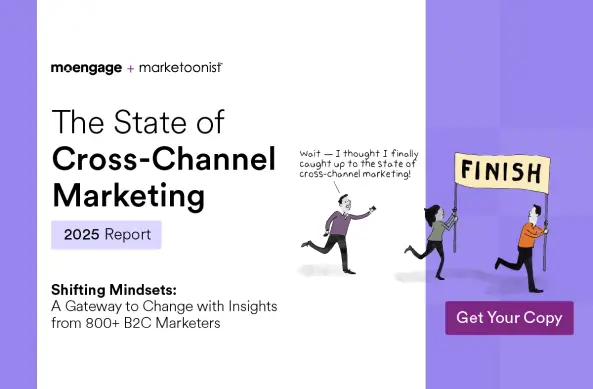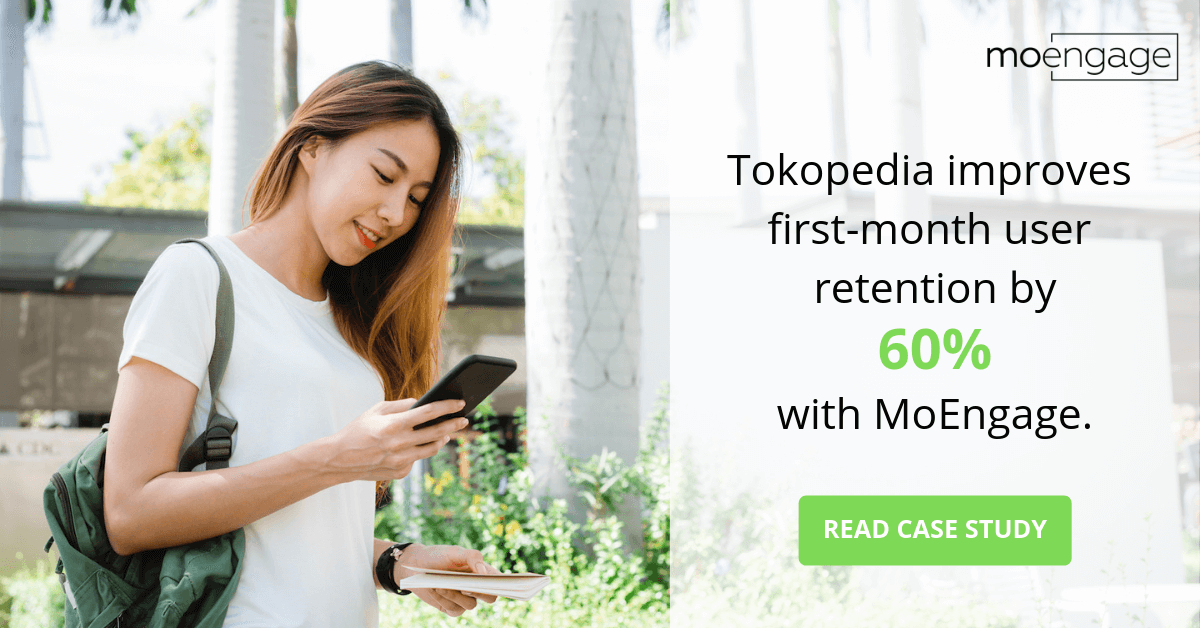Drive Growth With Omni-channel Marketing Strategies [Webinar Wrap-up]
![Drive Growth With Omni-channel Marketing Strategies [Webinar Wrap-up]](https://www.moengage.com/wp-content/uploads/2018/12/OMNI-3-2.png)
Reading Time: 5 minutes
|
A challenge that most marketers face today is to engage and retain digital customers despite being armed with so many different tools and technologies. In our recent webinar, Nalin Goel, VP Product Development, and I discussed omnichannel marketing strategies and best practices that can help marketers drive growth.
If you missed joining us for the webinar, I’ve got you covered. Below is a summary of the webinar discussion, or you can access the webinar recording here.
The Importance of Omnichannel Customer Engagement
Today’s consumers live in a hyper-connected world. They switch between mobiles, desktops, using multiple channels and platforms. According to a study, consumers switch between three to four screens before completing a task. This poses a challenge for brands as they have to cut through the noise to offer a seamless experience to their customers. It’s not just marketers who are looking at omnichannel customer engagement. 87% of customers believe that brands must invest in offering seamless customer experiences.
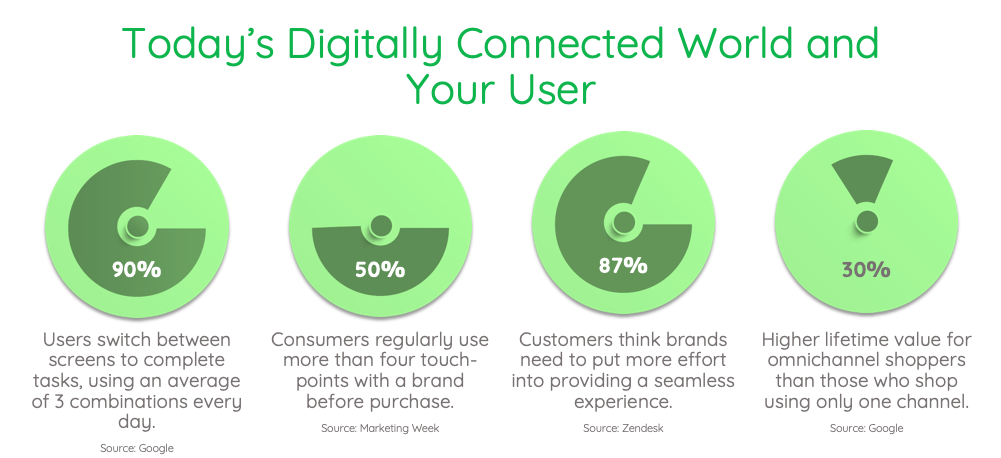
Omnichannel marketing enables brands to offer an integrated, consistent, and seamless experience across various customer touch-points. These channels cannot work in silos; they have to work in integration to bring back customers from where they had dropped off.
| Bonus Content
👉 Definitive Buyer’s Guide To Customer Engagement Platform [Ebook] 👉 Beginner’s Guide to Omnichannel Marketing [Ebook] 👉 OYO Rooms Observes 8X Increase In Engagement with Omnichannel User Engagement [Case Study] 👉 Mashreq Neo Boosts Debit Card Activation by 16% using Omnichannel Experience [Case Study] |
Build a Seamless Experience Across Different Channels
With customers shifting from one channel to another, offering a uniform experience across every channel is important. To do this, marketers have to first understand their customer’s behavior, the channels they use, and the purpose for which it is used. This can be achieved by mapping customer journeys across touch-points and creating unified behavioral profiles.
Look at the customer one-view example below. This self-care app understands the customer’s behavior, device, Lifetime Value (LTV), average order value, and top activities. It also utilizes past engagement through emails, SMS, and push notifications. This is a wealth of customer information that can help the brand customize offerings and recommendations for John.
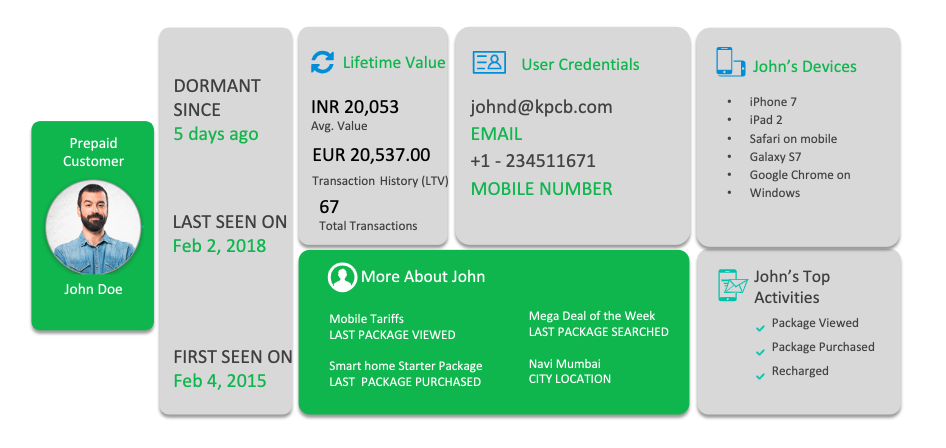
No matter what channel a customer chooses to make an inquiry, the response (in terms of speed, tone of voice, and outcome) should be the same. Of course, this can make things very complicated for brands. Consumers hop across various channels in order to carry out even the simplest of tasks, whether it’s buying products from an E-commerce website or checking the opening hours of that brand’s retail shop. Also, within the same company, these different channels might be managed by different teams with different goals and priorities. So it is highly likely that a customer hops across various brand channels and has a completely different experience within each one.
Take a look at 7 Major Challenges in Omnichannel Marketing and How to Fix Them
Industry Examples of Omnichannel Customer Engagement
A sales funnel has four stages – Acquire, Activate, Retain, and Repeat. A successful omnichannel strategy will consider all these four stages and offer a seamless customer experience across all these stages using various touch-points.
For example, Oasis, a fashion retailer in the U.K. combined their E-commerce site, mobile app, and brick-and-mortar shop to offer a seamless shopping experience. When a customer walks into the retail store, the sales associates offer on-the-spot product information using their iPad. If the product is out of stock, they order it online and ship it to the customer directly.

Similarly, Starbucks encourages customers to order coffee while standing in line or earlier via an app. The customers can pick up their order when they reach the outlet. They can complete payments via Apple Pay or Google Pay and even analyze their reward points. This has reduced the wait time during peak hours and has led to a 29% growth in mobile payments in the U.S. for the brand.

Take a look at Omni-channel Marketing Strategies to Help You Grow Your ROI
How Does MoEngage Help With Omni-channel Marketing?
MoEngage’s platform is built for the mobile-first world and helps companies orchestrate campaigns across push notifications, emails, in-app messaging, web push notifications, and SMS. We recently featured in Gartner’s Magic Quadrant for Mobile Marketing Platforms. Our platform helps companies create, visualize, and deploy omnichannel campaigns that reach customers at the right time through the right channels, and with the right message.
One of Asia’s leading telecom service providers uses MoEngage to drive customer engagement across their self-care app funnel. Our platform helps them connect with customers across different digital channels to drive self-care app adoption. This has helped the company grow its revenue by 20% and increased the number of active customers in the app by 15%.
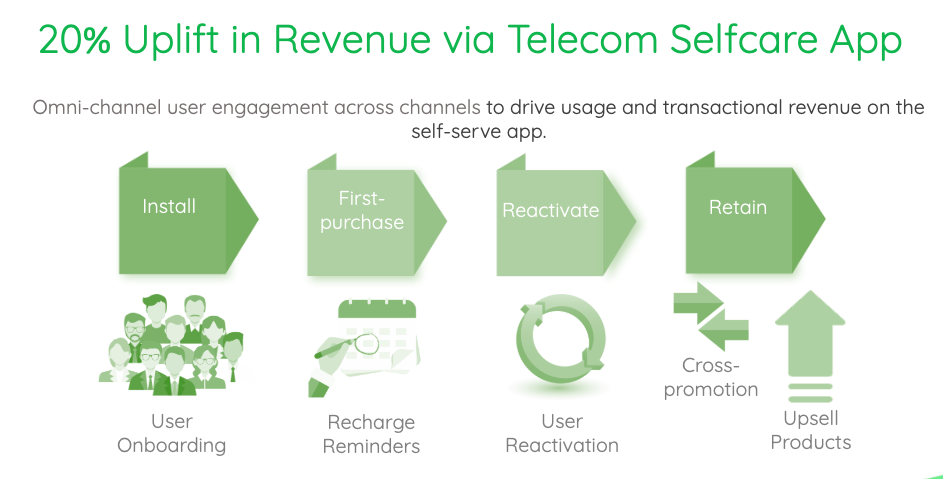
Similarly, we helped Tokopedia, Indonesia’s largest online marketplace create a series of integrated cross-channel campaigns that engage customers with messages across owned and paid channels by using MoEngage Flows. The consistent and constructed nature of engagement improved customer retention by up to 60% and boost their first conversion rate by 20%.
Check out 4 Powerful Ways Omnichannel Marketing Helps Boost Your ROI here
How do technologies like AI and machine learning help marketers implement omnichannel engagement effectively? What are the best practices to follow as you implement omnichannel marketing for your company? We’ll cover answers to these questions and some real-world examples in our next blog – stay tuned.
Meanwhile, take a look at this presentation about the nuances of omnichannel marketing.
To be the first to get notified about our blogs, webinars, and updates, subscribe to our newsletter.

